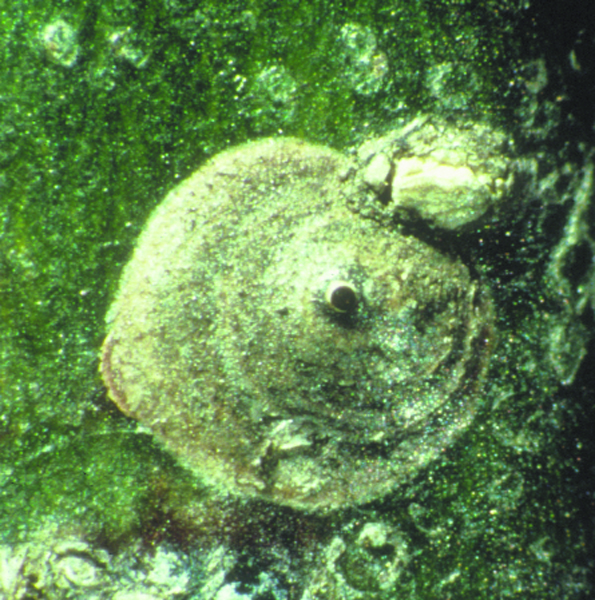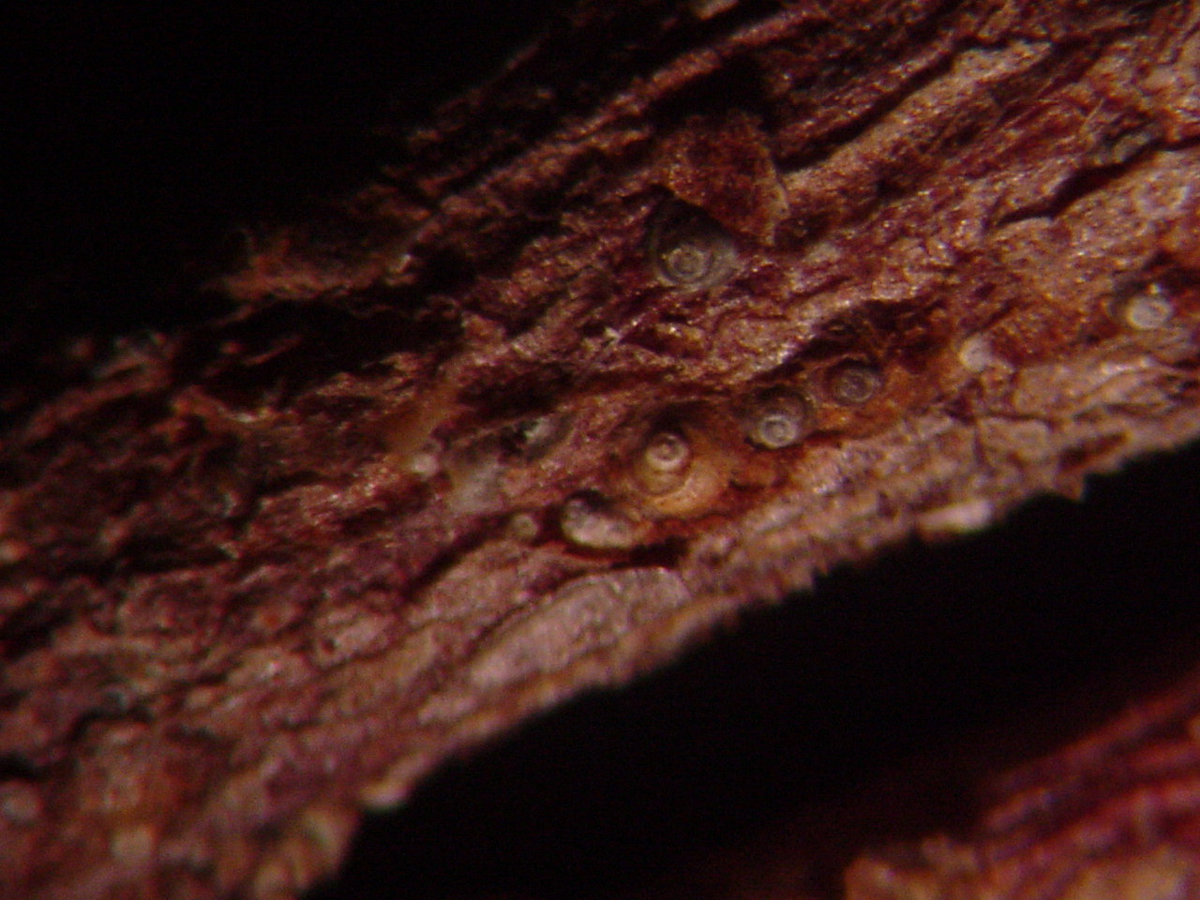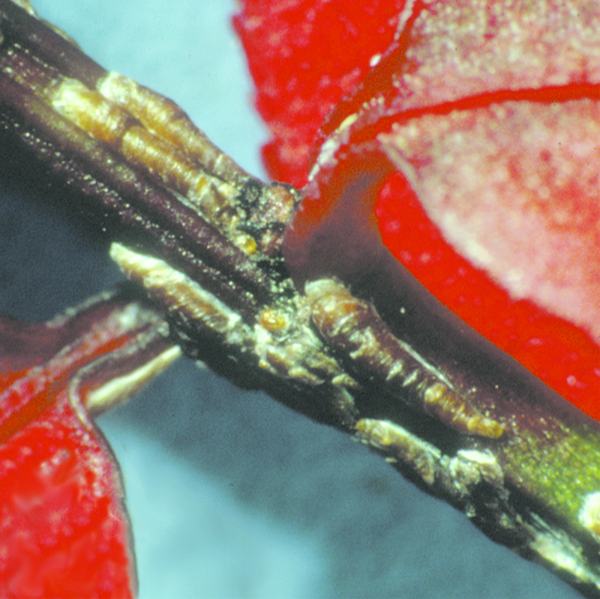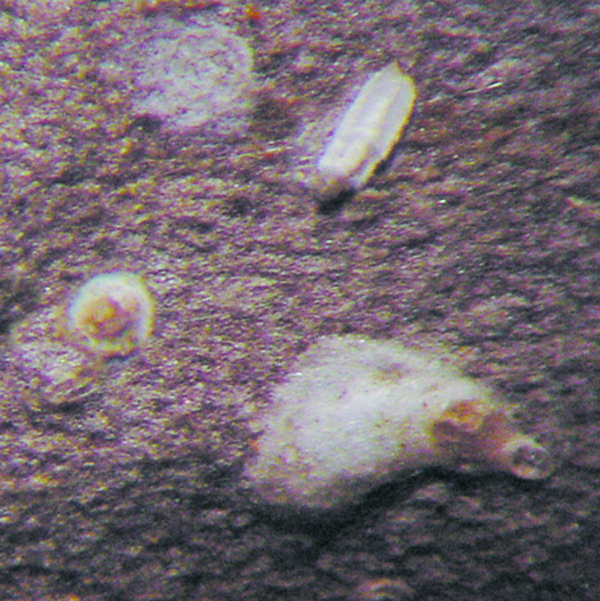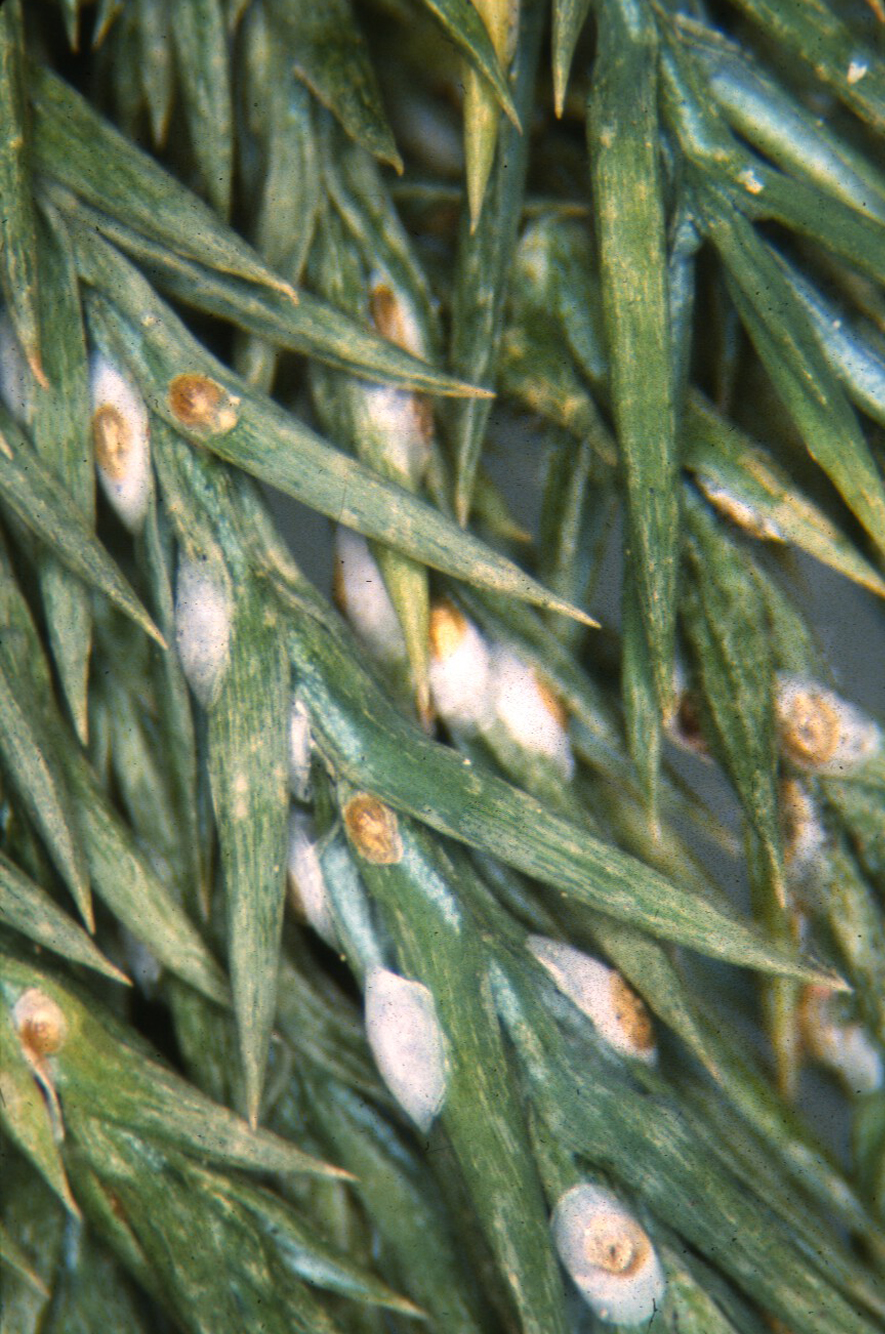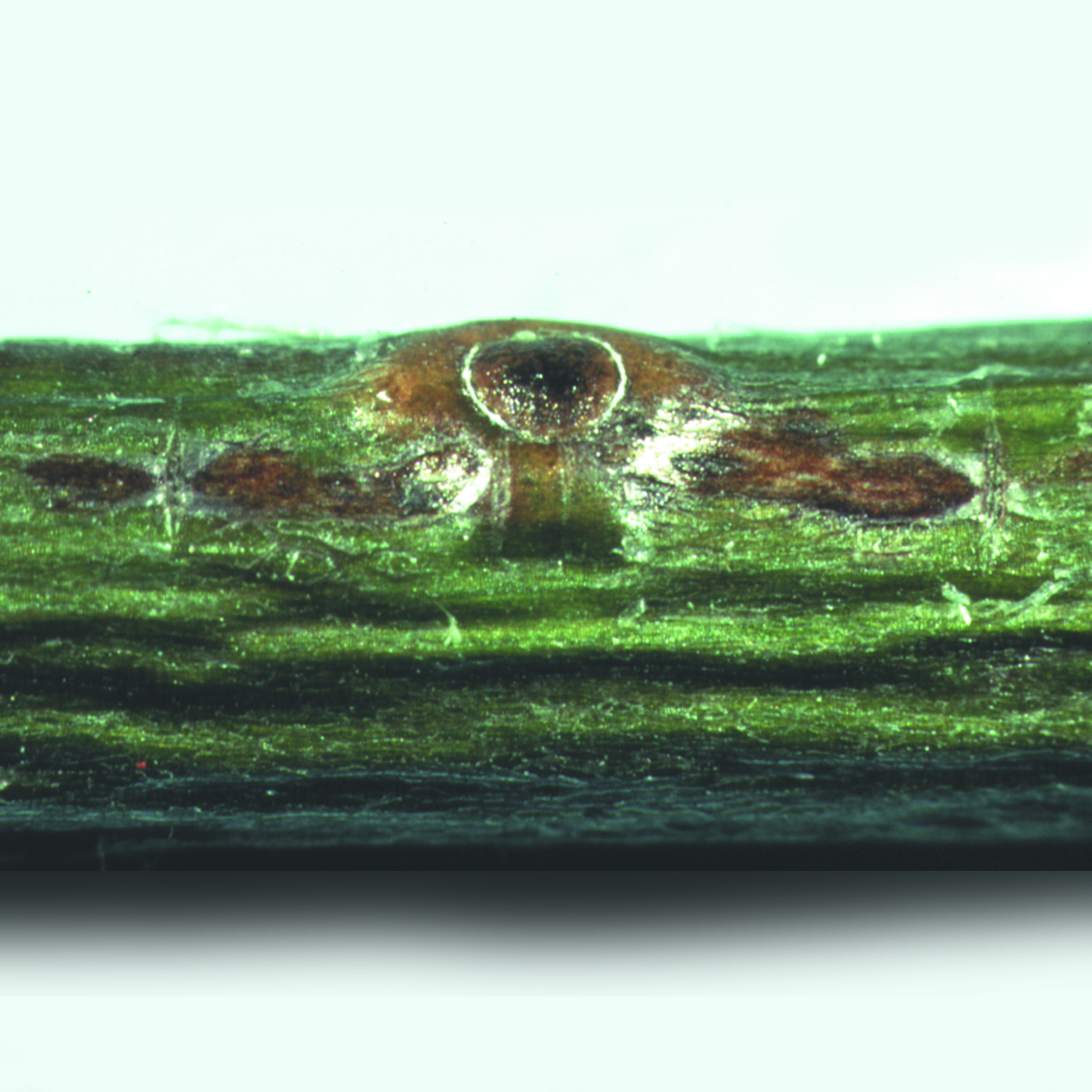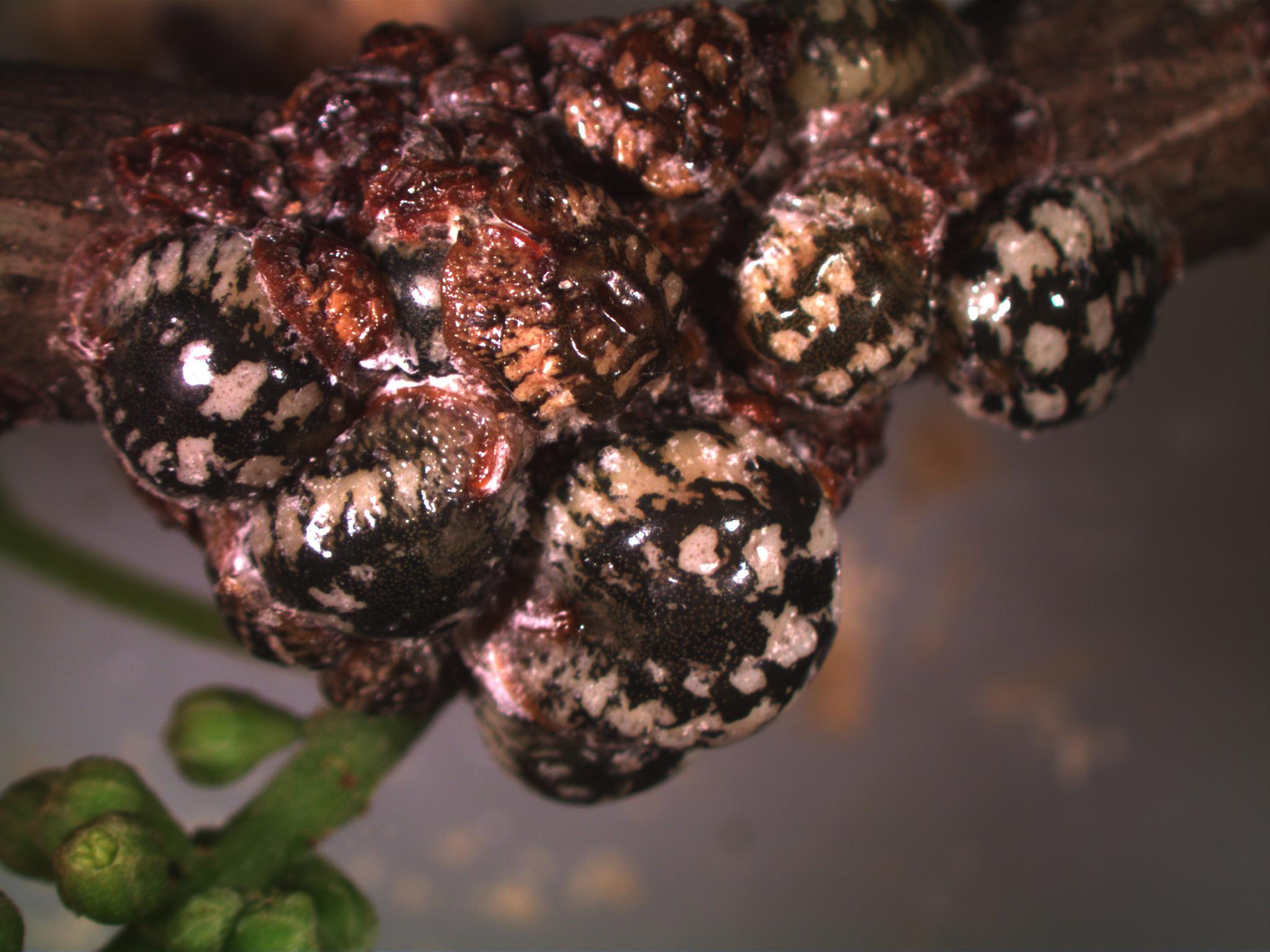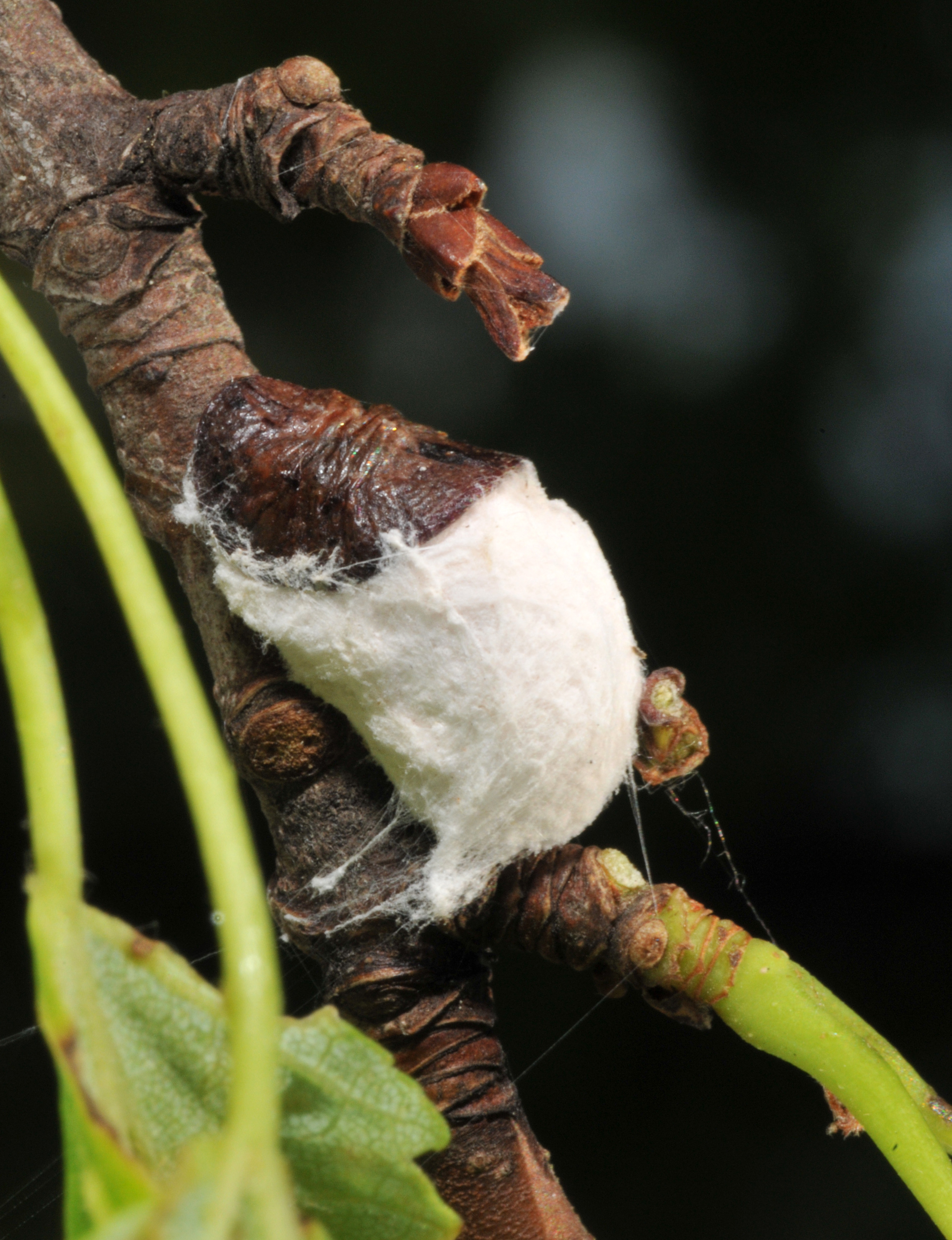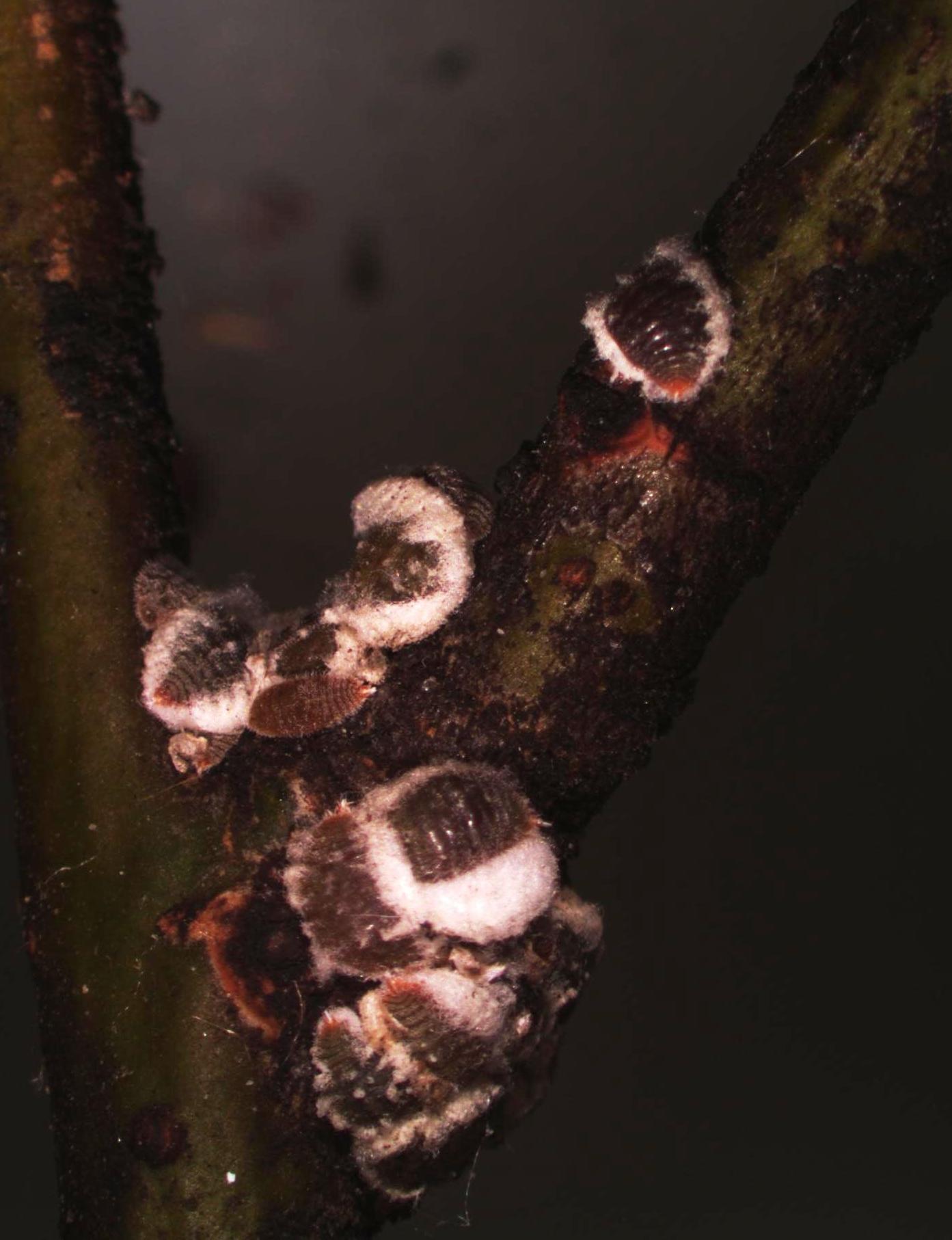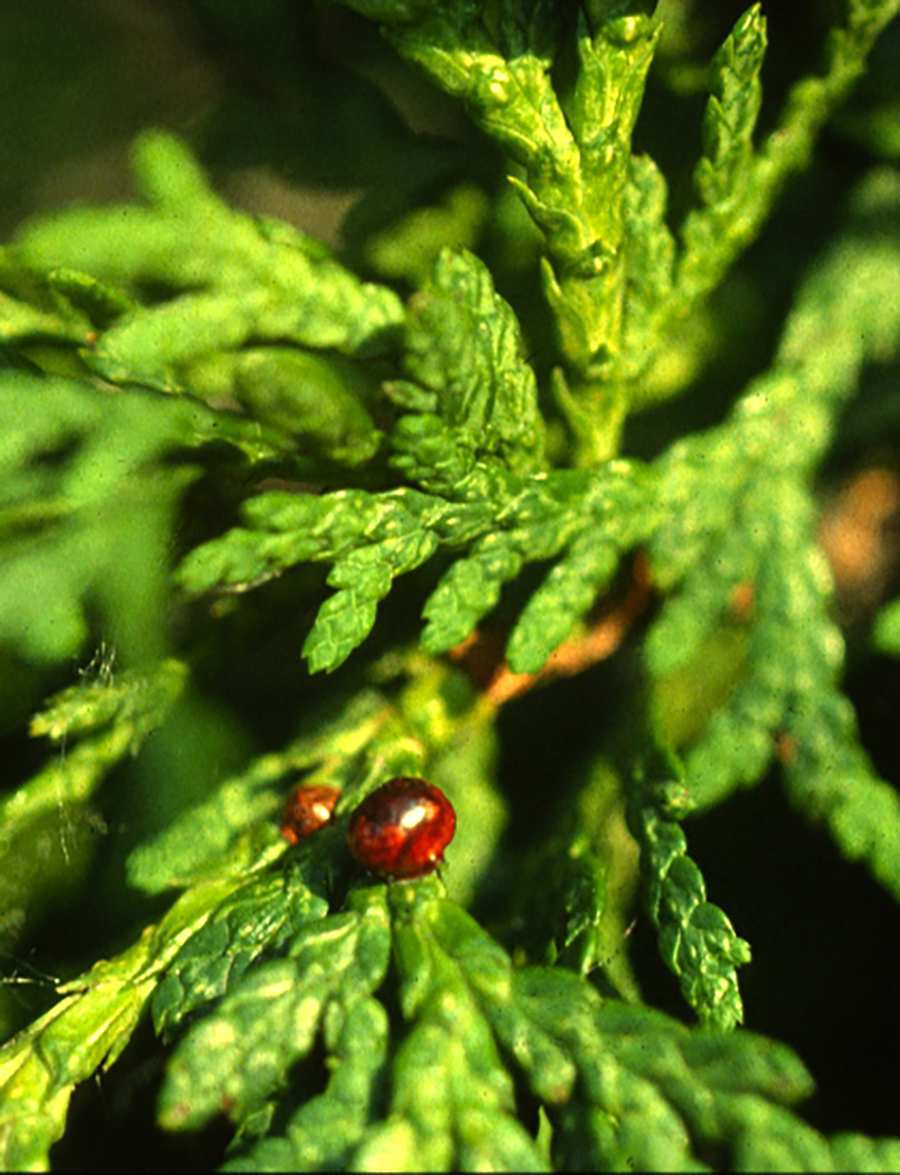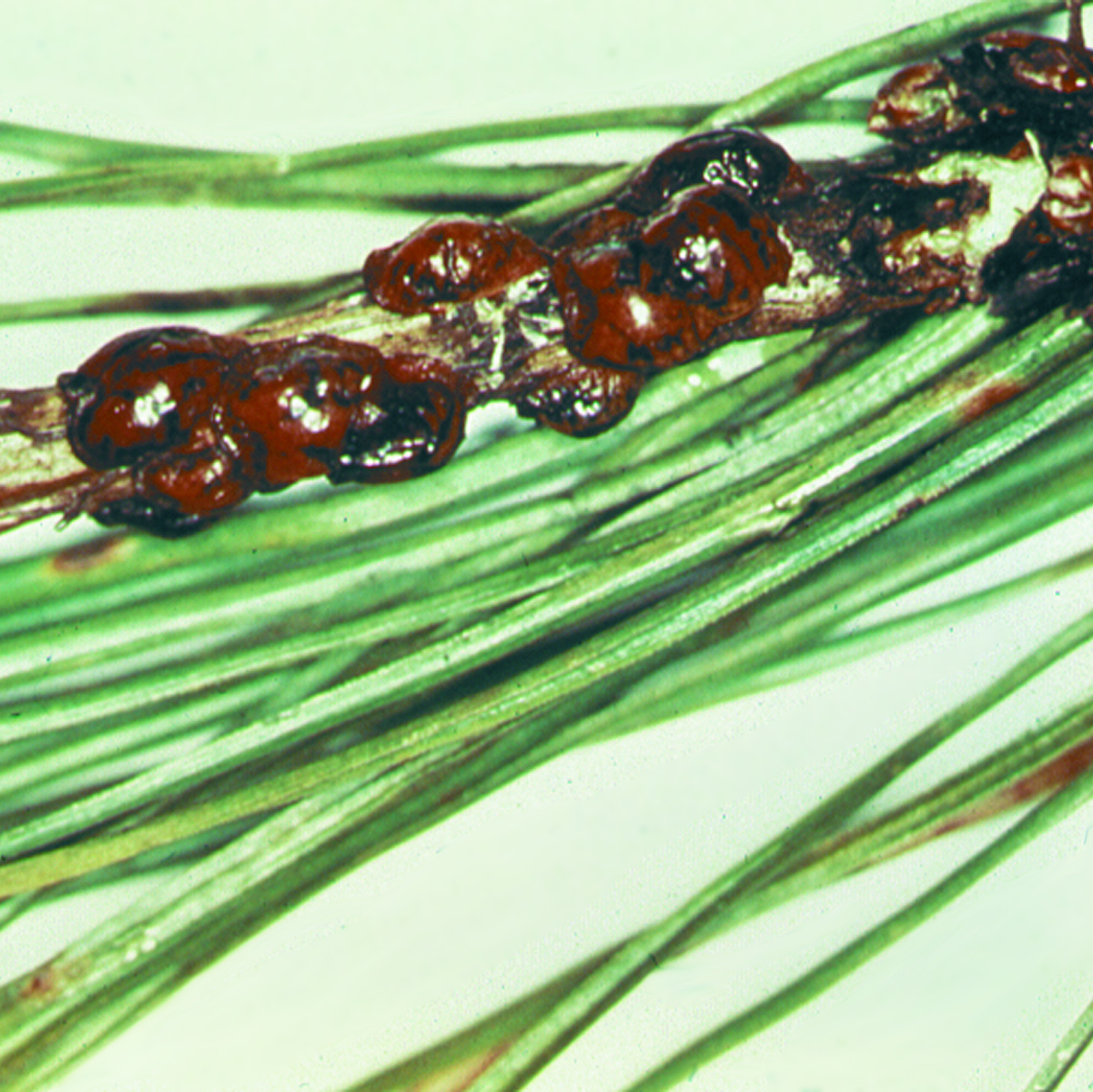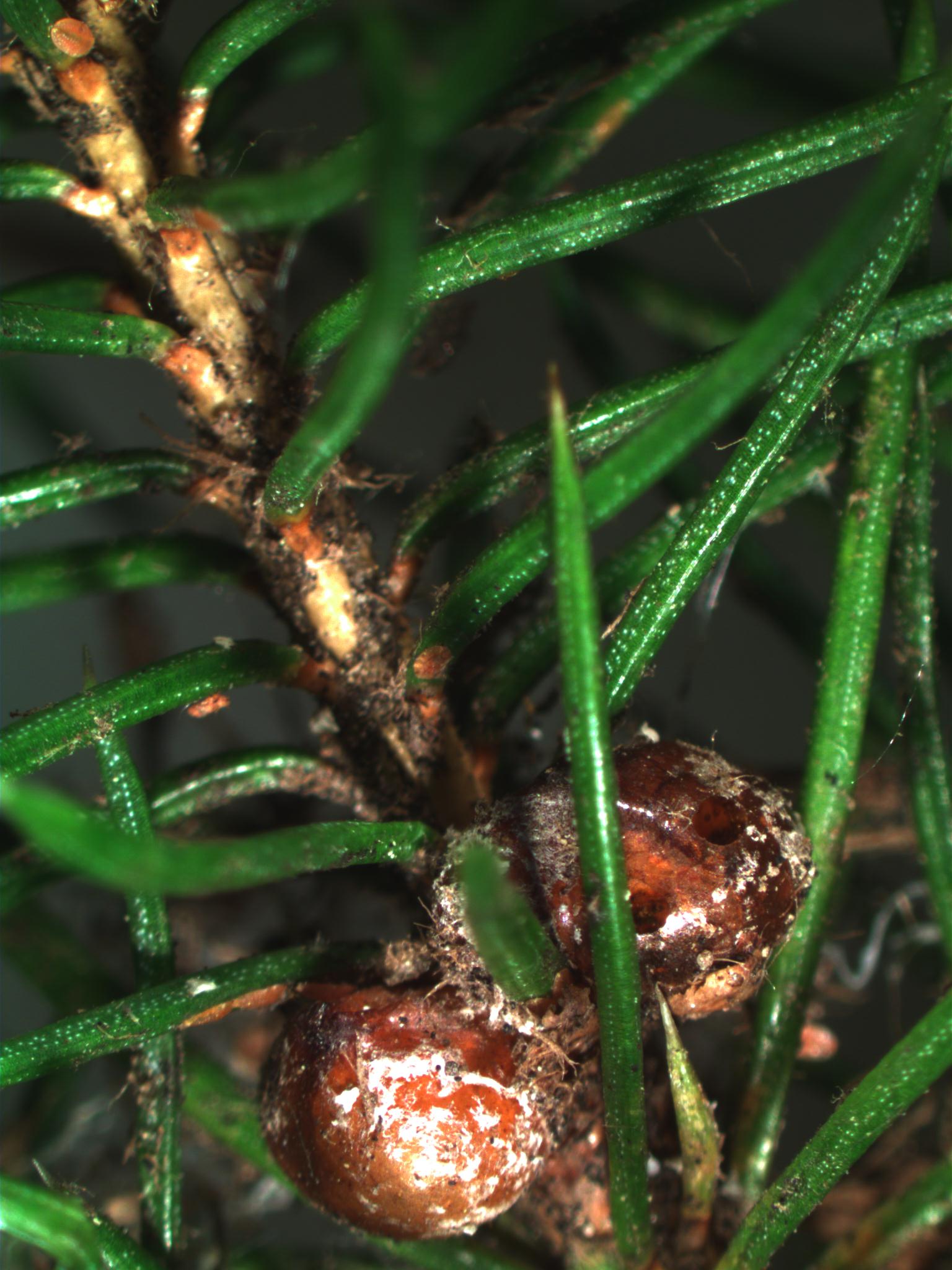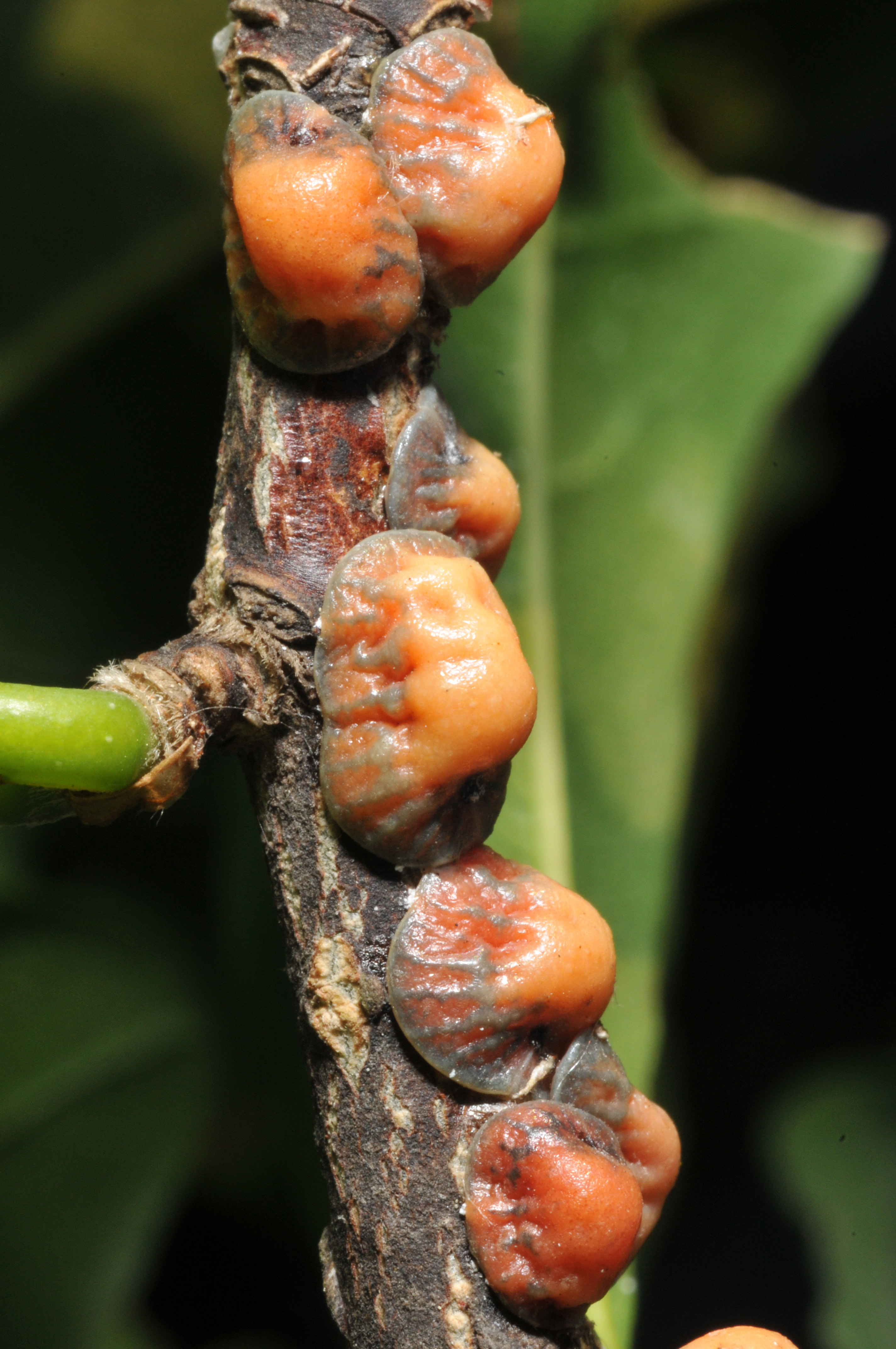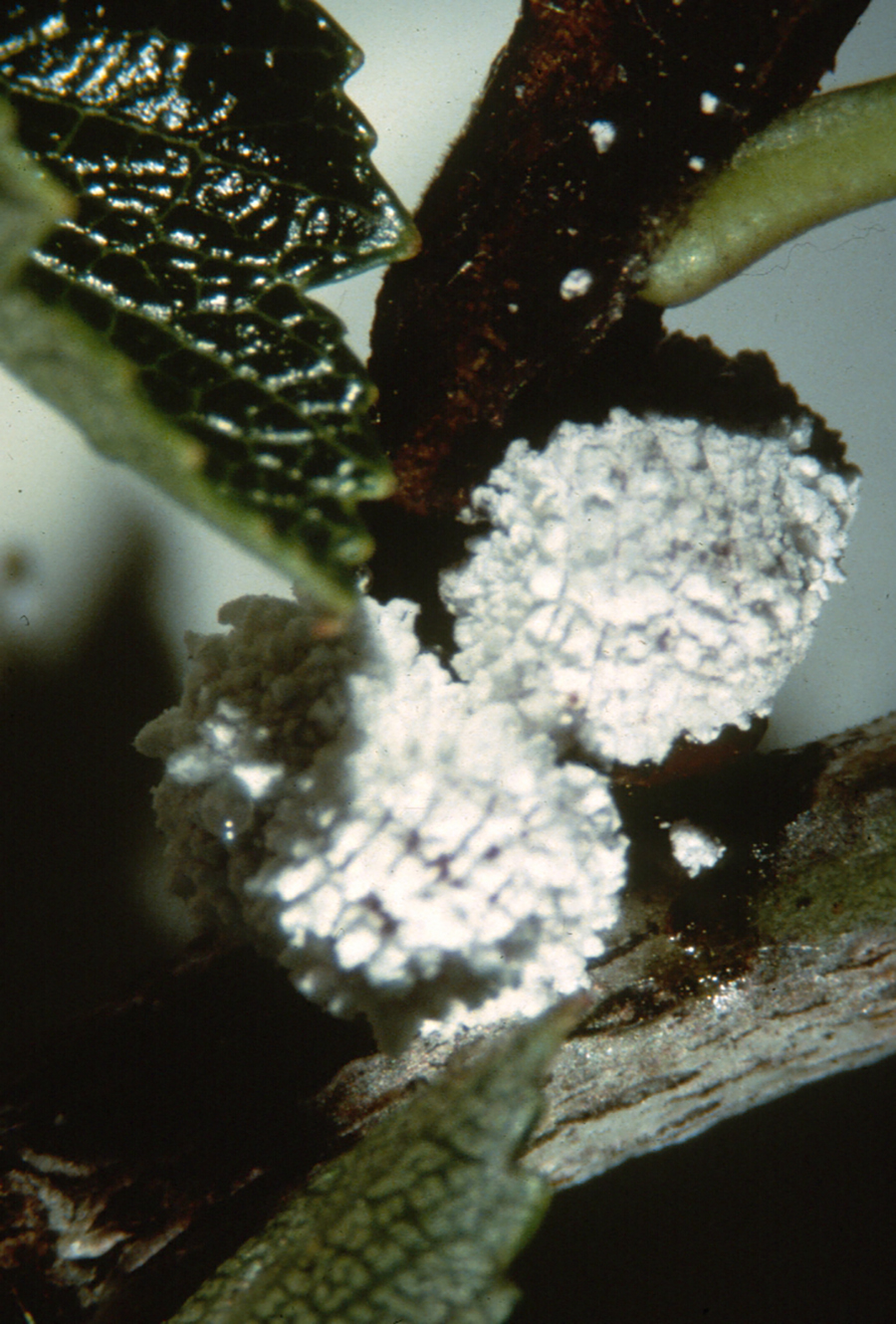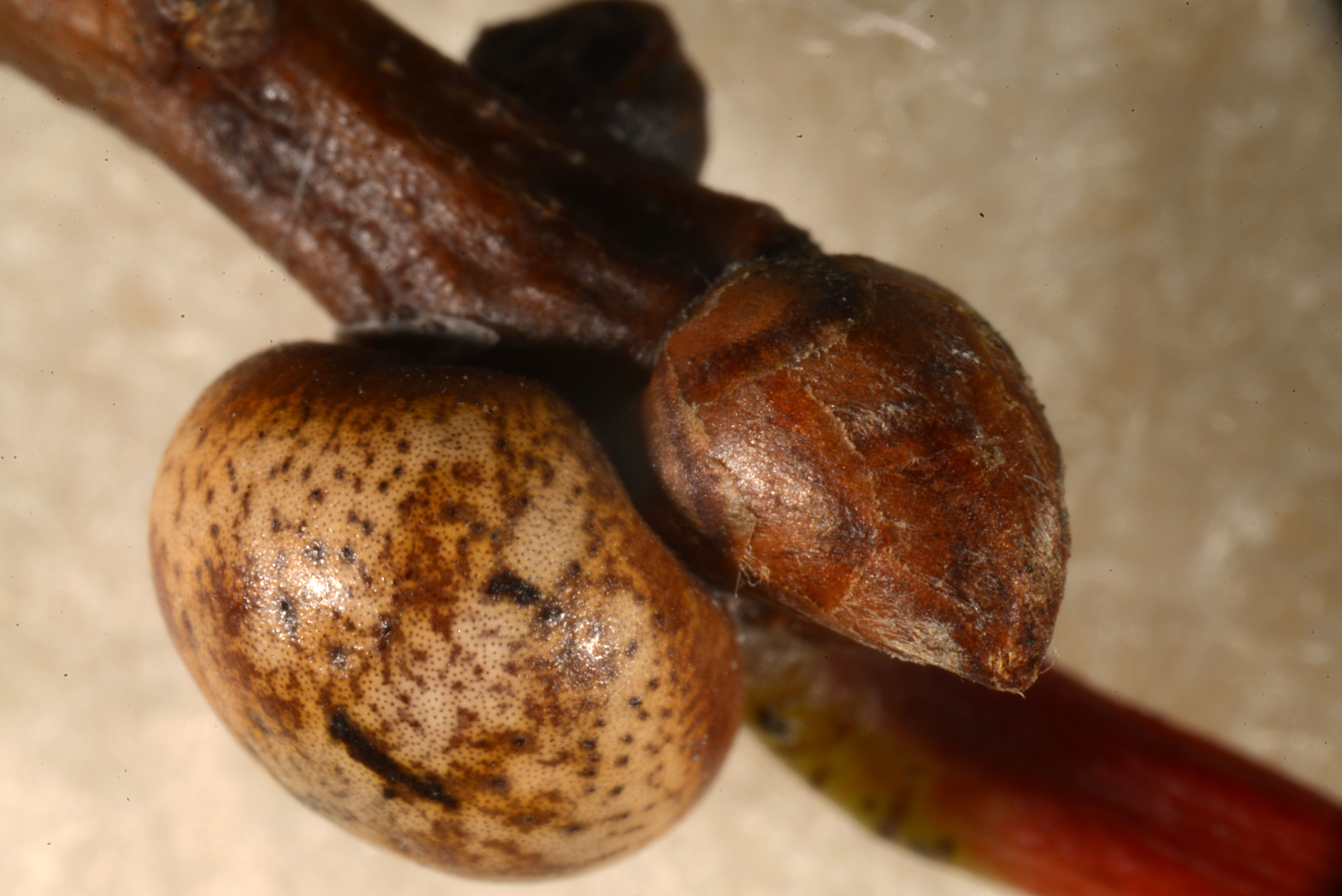Landscape & Ornamentals
SCALE INSECTS ON SHADE TREES AND SHRUBS
Clifford S. Sadof, Extension Entomologist
If you want to view as pdf, click here
Scale insects are common pests of shade trees and shrubs. More than 60 different kinds occur in Indiana, yet they are often overlooked or ignored until tree or shrub branches “mysteriously” start to die. Upon closer examination, these branches are likely to be covered with small bumps that are actually scale insects. They damage plants by sucking out plant juices.
From a damage standpoint, there are two types of scales, those that excrete a sugary liquid (honeydew), and those which do not. Honeydew is both a nuisance and a threat to plant health. Parked cars, walks, and benches beneath infested trees often become a sticky mess. The sugary liquid attracts ants, flies and wasps. Plants become unsightly when this liquid becomes a food for a black fungus called sooty mold. This mold can shade leaves and reduce plant growth.
Soft (Lecanium), kermes, and bark scales produce honeydew. These scales feed directly on plant parts that transport fluid and nutrients. Armored scales and pit scales do not produce honeydew. The armored scale's straw-like mouth moves like a plumber’s snake to burst plant cells and feed on their contents. Pit scales are likely to do the same to the raised plant tissue that surrounds them.
GENERAL SCALE LIFE CYCLE
Scales spend most of their lives feeding on the same spot of a plant, and unable to walk. After the eggs hatch beneath females the young scales are called crawlers because they can walk at this time. Crawlers are small (<1/32”) and flattened, looking like dust on the plant surface. Scale infestations spread when crawlers walk or are blown by the wind to nearby plants or plant parts.
After an armored scale crawler begins to feed, it becomes very flat and covered with a clear wax shell. As it continues to grow, it remains beneath its waxy armor. This armor is difficult to penetrate with insecticides. Winged males crawl out from beneath their cover and mate with covered females who produce eggs. Females can produce about 100 eggs each.
Soft scales, are not covered by a waxy shell. Crawlers that hatch from eggs in mid-summer will usually crawl directly to leaves. They spend most of the summer feeding on leaves and excreting honeydew. They return to the twigs and bark where they spend the winter as settled second stage scales. They continue to grow on twigs in the spring until winged males mate with wingless females, who swell with up to 1,000 eggs.
CONTROL MEASURES
Inspection
Check plants for live scale infestations. Flip over suspicious looking bumps on twigs and branches with a thumbnail. Bark is usually intact beneath a scale. When a soft body is beneath a cover, the plant is likely to have live armored scales. When the bump itself can be squashed it is likely to be some other type of scale. When honeydew falls from a tree, leaves should be inspected for live soft scales or mealybugs.
Cultural Control
Scales will thrive on trees that are under stress. Plant trees that are correctly suited to your landscape site. Slower growing plants with variegated leaves can require more care. Keep them watered. Carefully inspect newly purchased plants for scales. If a twig is unusually bumpy and leaves are somewhat yellowed it may have scales.
If a plant is normally a rapid grower, such as red-osier dogwood, or wintercreeper euonymus, consider cutting out heavily infested branches with a pruning shears to foster growth of uninfested shoots.
Biological Control
The stationary life of scales makes them easy targets for many natural enemies including lady beetles and microscopic wasps. These beneficial insects can keep the numbers of scales quite low in a natural woodland setting.
Chemical Control
Conventional pesticides cannot penetrate a scale’s tough skin or waxy cover. Scale crawlers are killed by these pesticides when they are covered during foliar application, or as they walk along treated surfaces. To achieve maximum kill, pesticides in this group should be sprayed at the begining of the crawler period. Several obstacles make conventional materials undesirable for managing scales. Thorough coverage on tall trees is difficult and these materials do not kill scales after they settle. More importantly, these materials kill the scale’s natural enemies responsible for lasting control in the landscape.
Conserve natural enemies and kill armored scales on infested trees by using a biorational material like horticultural oil. This material works by smothering scales. Unlike other conventional pesticides, this material can kill armored scales after they have settled while the scale body is still somewhat clear. After it dries, it is not toxic to natural enemies that can fly back to an infested plant and feed on the remaining scales. When applied in winter at the dormant rate, horticultural oil kills scales that do not winter as eggs beneath the scale cover (See Table 1 for winter stage).
For persistent armored scale problems or those scales that winter in the egg stage (pine needle or oystershell scle) insect growth regulators can be a promising biorational alternative. Apply when scales are crawling or when the scales are still clear. These materials (e.g., Pyriproxifen) kill insects as they molt. Soil applied systemic insecticides are effective rescue treatments.
Control of soft scales an be achieved by targetting egg laying females with bifenthrin in the spring. A second spray of pyriproxifen targetting crawlers on leaves. The next year apply pyriproxifen sprays to leaves, if needed. To get the most from both natural enemies and pesticides, do the following:
- Identify the scale. Use picture sheet and Table 1.
- Inspect plants for live scales in early spring and for active crawlers in summer
- Use Table 2 to make decisions about pesticide use, and Table 3 to select a pesticide.
| Table 1. Most Common Scales of Indiana |
|---|
| Table 2. Assessing the Scale Infestation1 |
|---|
| Situation | Response | Comment |
|---|---|---|
| Live armored scales on plant in spring when plant is dormant | Dormant season spray | Low impact on natural enemies, only for armored scales that do not winter as eggs |
| Live armored or pit scales on plant. Crawlers are present or have recently settled. Some new leaf discolor or branch dieback. OR Live honeydew producing scales on plant. Crawlers have not settled and are actively walking. Some new leaf discolar or branch dieback. |
Summer biorational spray | Low to moderate impact on natural enemies. Some parasitic wasps active at this time. Wash honeydew from cars, benches, and patios to manage honeydew nuisance. |
| Live armored or pit scales on plant. Crawlers are present or have recently settled. New leaf discolor or branch dieback is severe. OR Live honeydew producing scales on plant. Crawlers are present or have recently settled. Female scales are filling with eggs. New leaf discolor or branch dieback is severe. |
Summer conventional spray | High impact on natural enemies. Bifenthrin has been shown to kill soft scales as they fill with eggs. |
| 1 Always conserve natural enemies when plant health and customer satisfaction can be maintained | ||
| Table 3. Chemical Responses to Scale Infestations |
|---|
| Response | Insecticide | Use in 1 Gal. | Use in 100 Gal. | Comment |
|---|---|---|---|---|
| Dormant season sprays | Superior Oil (Sunspray, Volk Oil, Clean Crop, Scalecide, and others) | 4 oz. or 7.5 Tbsp. | 3 gal. | Not effective for soft scales and armored scales that winter as eggs. Use before spring growth when temperature is above 40°F. Do not follow with Captan, Morestan, Sevin, or Cygon for 1 month. Use ultrafine oil at low rate for soft maples. Can temporarily remove "bloom" from blue-needled conifers. |
| Ultra-fine Oil (Ultra-Fine, Sunspray 6E Plus, Rockland, and others) | 4-5 oz. or 8-10 Tbsp | 3-4 gal. | ||
| Summer biorational spray on actively crawling or recently settled scales | azadirachtin (Azatrol EC) | 1.6 - 2.1 fl. oz. | 160 - 218 fl. oz. | OMRI approved. |
| Insecticidal soap | 2.5 oz. or 5 Tbsp. | 2 gal. | On actively crawling scales, especially soft scales. | |
| Buprofezin (Talus 70 DF) | 0.14 oz. | 14 oz | None. | |
| pyriproxifen (Distance, Fulcrum) | 1 1/3 tsp. 1/2 - 3/4 tsp |
21.5 fl. oz. 1-1.5 cups |
Do not use more than twice a season. Does not kill adults. | |
| spirotetramat (Kontos) |
See label | See label | Nursery and greenhouse only. | |
| Ultra-fine oil (Ultra-Fine, Sunspray 6E Plus, Rockland and others) | 2.5 oz. or 5 Tbsp | 2 gal. | Can temporarily remove "bloom" from blueneedled conifers. Drought stressed plants, dwarf Alberta spruce and soft maples can be sensitive. Do not follow with compounds as listed above. Avoid spraying on wet foliage. | |
| Summer conventional spray (when crawlers are active) | bifenthrin (Talstar 10WP) | 2 tsp. | 2 1/4 cup | For licensed applicators only |
| cyfluthrin (Bayer Lawn & Garden) | 2 Tbsp. | - | Homeowner use. | |
| cyfluthrin (Tempo, Decathalon) | See label | See label | For licensed applicators only. | |
| deltamethrin (Suspend SC) | 3/4 - 1.5 tsp. | 4-8 oz | For licensed applicators only. | |
| lambda-cyhalothrin (Battle WP, Scimitar WP) | - | 1.5-5 fl. oz. | For licensed applicators only. | |
| malathion (Malathion 57EC) | 4 tsp. | 2 pts. | Injury may ocur on hickory, virburnum, lantana and elm. |
READ AND FOLLOW ALL LABEL INSTRUCTIONS. THIS INCLUDES DIRECTIONS FOR USE, PRECAUTIONARY STATEMENTS (HAZARDS TO HUMANS, DOMESTIC ANIMALS, AND ENDANGERED SPECIES), ENVIRONMENTAL HAZARDS, RATES OF APPLICATION, NUMBER OF APPLICATIONS, REENTRY INTERVALS, HARVEST RESTRICTIONS, STORAGE AND DISPOSAL, AND ANY SPECIFIC WARNINGS AND/OR PRECAUTIONS FOR SAFE HANDLING OF THE PESTICIDE.
January 2017

It is the policy of the Purdue University Cooperative Extension Service that all persons have equal opportunity and access to its educational programs, services, activities, and facilities without regard to race, religion, color, sex, age, national origin or ancestry, marital status, parental status, sexual orientation, disability or status as a veteran. Purdue University is an Affirmative Action institution. This material may be available in alternative formats.
This work is supported in part by Extension Implementation Grant 2017-70006-27140/ IND011460G4-1013877 from the USDA National Institute of Food and Agriculture.
1-888-EXT-INFO
www.extension.purdue.edu
Order or download materials from www.the-education-store.com

